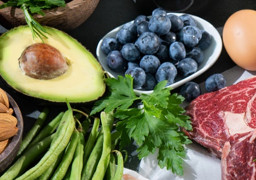
|
GMO의 잠재력과 그 미래 | |||
| 공식적으로 ‘GMO’는 유전자 변형 유기체를 의미한다. 이 용어는 유전 ... |


  |
 |  |
 |
[Energy/Politics]
GMO의 잠재력과 그 미래
By Global Trends Editor Group
공식적으로 ‘GMO’는 유전자 변형 유기체를 의미한다. 이 용어는 유전 공학 기술을 사용하여 DNA를 변형시킨 모든 식물, 동물, 박테리아 또는 곰팡이를 말한다. 원자력이나 인공지능과 마찬가지로 유전자 변형은 수천 년 동안 인류를 괴롭힌 엄청난 문제들을 해결할 수 있는 잠재력을 가지고 있다. 그러나 잘못 사용하면 큰 해를 끼칠 가능성도 있다. 그렇기에 우리는 유전자 변형을 ‘대단한 수많은 옵션(Great Many Options)’의 약자로도 해석할 수 있을 것이다. 이 대단한 옵션에는 무엇이 있을까? 잠재력은 어디까지 일까? 무엇이 제한적 요소일까? 긍정적인 면을 포기하지 않으면서 어떻게 부정적인 면을 효과적으로 최소화할 수 있을까?
‘GMO’는 유전자 변형 유기체를 의미한다. 이 용어는 유전 공학 기술을 사용하여 DNA를 변형시킨 모든 식물, 동물, 박테리아, 곰팡이를 말한다.
지금까지 경제적으로 가장 중요했던 유전자 변형은 사람과 동물을 먹이는 데 사용되는 식물을 그 주요 대상으로 했다. 식품 산업에서 이러한 유전자 변형은 수확량, 영양 성분, 가뭄 저항 및 회복력, 해충 저항성, 재배 용이성 등의 다양한 이유로 시도된 것이다.
유전자 변형이 아니더라도, 선택적 육종을 통해 ‘자연적으로’ 식품에 바람직한 특성을 부여하는 것은 가능한 일이고, 인류는 실제로 그렇게 작물을 개선해왔다. 하지만 이 과정에는 여러 세대에 걸친 긴 시간이 필요하다. 또한 육종가는 어떤 유전적 변화가 새로운 특성으로 이어졌는지를 확인하는 데 어려움을 겪는 가정을 거쳐야 한다.
하지만 유전자 변형은 식물에 원하는 특성을 부여하는 생명 공학 기술을 사용하여 이 과정을 매우 빠르게 가속화한다.
예를 들어, 가장 일반적인 유전자 변형 중 하나는 Bt 독소라는 천연 살충제를 생산하도록 유전자를 변형시킨 Bt 옥수수이다. 이 독소를 생성함으로써 옥수수는 해충에 저항할 수 있어, 살충제의 필요성을 줄일 수 있다. 실제로 2014년 147건의 연구를 분석한 결과 이 유전자 변형이 화학 살충제 사용을 37% 줄이고, 작물 수확량을 22%까지 더 늘린 것으로 나타났다.
또 다른 유전자인 Ht는 잡초가 작물을 밀어내는 것을 막기 위해 사용되는 제초제에 대한 작물 저항력을 높인다.
이러한 분명한 이유로 두 유전자를 모두 지닌 작물을 재배하는 것이 옥수수, 목화와 같은 주요 부문의 농업을 지배하게 되었다.
유전자 변형 작물은 가뭄과 같은 스트레스가 많은 조건에서 생존하고, 마름병과 같은 질병에 저항하는 데 도움이 되는 유전자로 변형되어 농부들에게 더 높은 수확량을 제공하기도 한다. 이러한 유전자 변형은 재배에 더 열악한 조건에도 불구하고 더 많은 양을 수확할 수 있게 하여, 농부와 소비자의 비용을 낮추는 데도 도움이 된다.
또한 유전자 변형은 식품의 영양가를 높일 수 있다. 예를 들어, 황금 쌀로도 불리는 베타카로틴 함량이 높은 쌀은, 일반 식단에 비타민 A가 만성적으로 부족한 지역에서 실명을 예방하는 데 도움이 되도록 개발되었다.
이밖에도 유전자 변형은 절단 면이 공기에 노출된 후에도 하얗게 유지되는, 갈변하지 않는 사과와 같이 식품의 풍미와 외관을 향상시킬 수도 있다.
이러한 유전자 변형 작물은 오늘날 미국에서 매우 흔한데, 콩, 면화, 옥수수의 90% 이상이 유전자 변형 작물이다. 이에 마켓에서 판매하는 모든 식료품의 최대 80%가 유전자 변형 작물에서 나오는 재료를 포함하고 있는 것으로 추정된다.
또한 미국에서 육류 및 유제품에 사용되는 동물의 95% 이상이 유전자 변형 작물로 사육된다. 따라서 육류 제품에 비유전자 변형(Non-GMO) 또는 유기농이라고 구체적으로 표시되어 있지 않으면 유전자 변형 작물을 먹여 키운 것이라고 가정할 수 있다.
유전자 변형 작물은 농산물 재배를 훨씬 쉽게 만들어준다. 하지만 환경에 대한 잠재적 영향과 인간에 대한 안전성 문제가 있다. 물론 미 식품의약국, 환경보호국, 농무부는 모두 유전자 변형 작물이 인간과 동물에게 안전하다는 결론을 내리고 있다.
유전자 변형 작물은 유럽을 제외한 거의 모든 곳에서 널리 채택되었고, 전 세계적으로 농업 생산성을 높이는 데 크게 기여한 부분이 있다.
이러한 작물 외에도 박테리아, 곰팡이, 동물과 관련된 유전자 변형 기술도 점점 더 효과적이고 보편화되고 있다.
유전자 변형 박테리아를 보자. 이 박테리아는 이미 생명공학의 진정한 일꾼이라 할 수 있다. 이전까지 희귀한 약물과 영양소가 이제 유전자 변형 박테리아 기능을 활용하여 산업적 규모로 제조되고 있다. 이러한 추세는 1970년대 이후 점점 더 일반화되었다.
이 박테리아에 대한 안전성은 논쟁의 여지가 없다. 최종 제품의 여과 및 테스트뿐만 아니라, 철저하게 봉쇄된 실험실에서 이뤄지기 때문이다. 더욱이 이러한 유기체들 중 다수는 특별한 인공 환경 밖에서는 생존할 수 없도록 의도적으로 조작되어 있다.
곰팡이 또한 쉽게 합성할 수 없는 유용한 화합물을 생산하도록 유전적으로 변형된다. 약물 및 기타 화학 물질을 수확하기 위해 산업적 규모로 곰팡이를 자연적으로 발생시켜 재배하는 방식은 이미 상당히 일반적인 일이다.
사실, 가장 논란이 되면서도 유망한 유전자 변형 연구 분야는 동물과 관련이 있다. 이 분야의 잠재력과 가능성은 생물 의학 테스트에서 식품, 인간 장기 이식에 이르기까지 매우 다양하다. 최신 개발 사항과 영향력을 살펴보면 다음과 같다.
축산업자들은 수세기 동안 가축을 크고, 근육질이며, 온순하고, 기르기 쉽게 만들기 위해 선택적 번식을 사용해 왔다. 그러나 크리스퍼 유전자 가위와 같은 유전자 편집 도구를 사용하면 이제 그 과정을 매우 빠르게 진행할 수 있다.
크리스퍼 유전자 가위는 그 이전의 유전자 편집 도구에 비해 큰 이점이 있다. 우선 비교적 저렴하고 수행 능력이 빠르고, 사용하기가 쉽다. 이 새로운 형태의 기술을 통해 과학자들은 게놈에 더 많은 것들을 실험할 수 있다.
일부 형태는 C를 T로 바꾸는 것과 같이 DNA의 기본 문자를 변경할 수 있도록 해준다. 또 다른 형태는 완전히 새로운 유전자를 삽입할 수 있도록 한다.
따라서 과학자들이 농장에서 동물을 대상으로 이 유전자 가위 실험을 시작한 것은 놀라운 일이 아니다. 인기 있는 표적 중 하나는 근육 성장을 조절하는 단백질을 코딩하는 마이오스타틴이라는 유전자이다. 이 유전자를 조작하면 근육이 과도하게 성장할 수 있다. 즉, 크고 근육질인 동물이 만들어진다. 이것은 더 많은 육류 공급을 가능하게 한다.
이미 과학자들은 크리스퍼 유전자 가위를 사용하여 슈퍼 소, 돼지, 양, 토끼 및 염소를 만드는 실험을 진행했다. 다만 이 연구들은 아직 완벽한 결과를 얻지 못했으며 상용화할 준비도 거의 되지 않았다.
다만 어류 연구는 훨씬 더 큰 진전을 이뤘다. 미오스타틴 유전자를 표적으로 크리스퍼 유전자 가위를 사용하여 일본 과학자들은 같은 양의 사료를 먹이고도, 변형되지 않은 개체보다 17% 더 많은 근육질의 참돔을 만들어냈다.
유사한 접근법이 잉어, 틸라피아, 메기, 굴을 포함한 기타 수생 동물을 강화하는 데 사용되었다. 이 과학자들은 더 많은 오메가-3를 생산하는 연어도 만들었다.
또 다른 연구자들은 크리스퍼 유전자 가위를 사용하여 질병 저항성을 높이는 다양한 방법을 실험하고 있다. 최근 ‘MIT 테크놀러지 리뷰(MIT Technology Review)’에 게재된 바와 같이, 연구원자들이 악어 유전자를 메기에게 투입하는 실험을 진행했다. 악어는 감염과 싸우는 데 특별한 재능이 있는 것으로 알려져 있다. 이 실험이 성공한다면 이는 대부분의 사람들이 생각하는 것보다 훨씬 더 큰 과학적 돌파구가 열리는 것이라 할 수 있다.
오늘날 전 세계적으로 양식되는 어류의 약 40%가 수확되기 전에 이미 폐사한다. 그 손실의 일부만이라도 막을 수 있다고 상상해 보자. 감염 저항성이 조금만 높아져도 이는 전 세계의 양식업에 큰 영향을 미칠 수 있다.
물론 아직까지는 미국의 그 어떤 마켓에서도 크리스퍼 유전자 가위를 통해 유전자가 변형된 동물성 식품을 찾을 수는 없다. 그러나 몇몇 부문에서는 이미 상당한 진척이 이뤄졌다. 일례로, 2021년 일본은 크리스퍼 유전자 가위로 편집한 생선 2종의 판매를 승인했다. 그 중 하나가 살이 오른 참돔이다. 또 다른 하나는 더 살이 많이 찌도록 설계된 타이거 복어이다.
이렇듯, 유전자 변형 기술은 기아와 질병을 제거할 수 있는 큰 잠재력을 가지고 있다. 하지만 더 큰 미래는 인간의 삶에 가장 큰 영향을 미치는 단계까지 나아간다. 바로 장기 이식에 대한 공급 한계를 해소하는 것이다. 심장, 폐, 간, 신장 기증자의 수는 그 수혜 후보자들의 수에 비해 턱없이 적은 수준에 머무르고 있다.
과학자들은 적어도 지난 20년 동안 소위 이종 이식의 가능성을 탐구해 왔다. 이러한 도전은 매우 의미심장하다. 하지만 ’살아있는 장기의 적층 제조‘나 ’수명이 긴 기계 장치‘의 발전 수준과 비교하면, 아직 미미한 수준에 머무르고 있다.
하지만 이 이종 이식이 가능해지면, 인간의 장기 적출과 관계되는 도덕적 문제뿐만 아니라 수요를 충족시키는 문제도 해소할 수 있다.
오래 전부터 과학자들은 이러한 이종 이식 측면에서 돼지가 가장 적합한 동물이라고 판단했다. 그리고 수년간의 유전자 변형 연구 끝에, 돼지 심장을 개코 원숭이에게 이식하는 데 성공했다. 개코 원숭이는 면역 체계와 심장이 인간과 비슷하다.
이 성과는 2022년에 10개의 유전자가 변형된 돼지를 통해 극심한 심부전증으로 고통받는 환자들에게 심장 이식을 위한 길을 열어줬다. 처음 이식은 개코 원숭이의 실험과 마찬가지로 큰 성공을 거뒀다. 하지만 몇 달 후 미처 발견되지 않은 ‘돼지 바이러스’로 인해 이식받은 환자가 감염되어 사망에 이르렀다.
이 사건에서 우리는 유전자 변형 솔루션의 거대한 잠재력과, 그 구현이 부족할 때 발생할 수 있는 문제를 동시에 볼 수 있다.
그렇다면 결론은 무엇인가?
그것은 유전자 변형 기술이 매우 놀랍고 실질적인 방식으로 사람들의 삶을 개선할 수 있는 수많은 옵션을 갖고 있다는 점이다. 이에 우리는 이러한 기술의 발전과 더불어, 선택할 수 있는 여러 옵션 중 가장 최적인 것을 현명하게 선택해야 한다.
그렇다면 앞으로 어떤 미래가 펼쳐질까? 현재의 기술과 발전 속도, 영향력이 미칠 산업과 분야를 고려할 때, 우리는 다음과 같은 예측을 내려 본다.
첫째, 2030년대 중반까지 유전자 변형 기술은 농업에서 헬스케어에 이르기까지 모든 분야에서 우리의 삶의 질에 막대한 기여를 할 것으로 보인다.
식량 비용 절감, 살충제 사용 감소, 품질 및 맛, 영양 개선 등 유전자 변형은 인류의 식단 개선에 큰 역할을 할 것이다. 더불어 심장, 폐, 간, 신장 및 기타 장기에 대한 현재의 제한된 기증자의 문제를 이 기술로 제거하는 상황이 오면 전 세계에서 이를 필요로 하는 사람들, 특히 전 세계의 고령화 계층은 삶의 질에 극적인 변화를 경험하게 될 것이다.
둘째, 게임의 판도를 바꾸는 모든 게임 체인저 기술과 마찬가지로 유전자 변경 기술은 다른 문제들을 일으킬 수 있다.
이러한 문제로 인해 일부 국가는 이 기술의 잠재력에 눈을 감게 될 것이지만, 그들보다 훨씬 더 많은 국가들은 이 유전자 변형 기술의 거대한 잠재력을 실현하기 위해 발생할 수 있는 위험을 사전에 관리하는 방식을 선택할 것이다.
셋째, 유전자 변형 기술은 기후 변화가 발생하면 기후 변화에 적응하는 데도 중요한 역할을 수행할 것이다.
녹색 식물과 대형 수생 포유류는 이산화탄소를 가두는 데 중요한 역할을 수행한다. 이를 극대화할 수 있도록 유전자 변형 기술을 활용할 수 있다.
Resource List
1. MIT Technology Review. January 20, 2023. Jessica Hamzelou. How CRISPR is making farmed animals bigger, stronger, and healthier.
https://www.technologyreview.com/2023/01/20/1067125/crispr-farmed-animals-bigger-stronger-healthier/
2. MIT Technology Review. February 2, 2023. Emma Foehringer Merchant. How CRISPR could help save crops from devastation caused by pests.
3. MIT Technology Review. January 10, 2018. Andrew Rosenblum. Meet the Woman Using CRISPR to Breed All-Male “Terminator Cattle.”
4. MIT Technology Review. January 19, 2023. Jessica Hamzelou. These scientists used CRISPR to put an alligator gene into catfish.
5. MIT Technology Review. December 11, 2020. Antonio Regalado. Gene editing has made pigs immune to a deadly epidemic.
6. MIT Technology Review. December 11, 2020. Antonio Regalado. What’s on the GMO menu: fast-growing salmon and slow-swimming tuna.
7. MIT Technology Review. May 4, 2022. Antonio Regalado. The gene-edited pig heart given to a dying patient was infected with a pig virus.
 |  |
 |
[Biotech/Economics]
Why GMO Should Stand for a “Great Many Options”
By Global Trends Editor Group
“GMO” stands for genetically modified organism. The term refers to any plant, animal, bacterium or fungus whose DNA has been modified using genetic engineering technology.
To date, the most economically important work has been done on plants used to feed people and animals. In the food industry, GMO crops have had genes added to them for various reasons, such as improving their yield, nutritional content, resilience to drought, pest resistance, and ease of farming.
While it’s possible to naturally give foods desirable traits through selective breeding, this process takes many generations. Also, breeders may struggle to determine which genetic change has led to a new trait.
Genetic modification significantly accelerates this process by using bioengineering techniques that give the plant specific desired traits.
For example, one of the most common GMO crops is Bt corn, which is genetically modified to produce a natural insecticide called Bt toxin. By making this toxin, the corn is able to resist pests, reducing the need for pesticides. In fact, an analysis of 147 studies from 2014 found that this GMO technology has reduced chemical pesticide use by 37% and increased crop yields by 22%.
Another gene called Ht makes crops more resistant to herbicides used to keep weed from crowding out the crops. For obvious reasons, using crops with both genes has come to dominate agriculture in major sectors like corn and cotton.
GMO crops have also been modified with genes that help them survive stressful conditions, such as droughts, and resist diseases like blights, resulting in a higher yield for farmers.
Together, these factors help lower the costs for the farmers and consumers because it allows greater crop yield despite harsher conditions.
Additionally, genetic modification can increase the nutritional value of foods. For example, rice high in beta carotene, also called golden rice, was developed to help prevent blindness in regions where local diets are chronically deficient in vitamin A.
Moreover, genetic modification may simply enhance the flavor and appearance of foods, such as non-browning apples, which stay white after being cut and exposed to the air.
Such GMO crops are incredibly common in the United States, where at least 90% of soy, cotton, and corn are genetically modified organisms. In fact, it’s estimated that up to 80% of all foods in supermarkets contain ingredients that come from genetically modified crops.
Furthermore, over 95% of animals used for meat and dairy in the United States eat GMO crops. So, if a meat product does not specifically indicate that it is “non-GMO” or “organic,” you can assume that it was fed GMOs.
While GMO crops make farming much easier, there is some concern around their potential effect on the environment and their safety for human consumption despite the Food and Drug Administration, Environmental Protection Agency, and Department of Agriculture all concluding that GMO crops are safe for human and animal consumption.
GMO crops have been widely embraced almost everywhere except Europe and have been largely responsible for rising agricultural productivity around the world. Beyond that, GMO technology involving bacteria, fungi, and animals is also becoming increasingly effective and commonplace.
In fact, GMO bacteria are already the real workhorses of biotechnology. Formerly rare drugs and nutrients are now manufactured on an industrial scale by harnessing the capabilities of genetically modified bacteria. This has become increasingly commonplace since the 1970s.
And it has remained largely noncontroversial because humans are isolated from these organisms by laboratory-style containment, as well as filtration and testing of the end-products. Furthermore, many of these organisms are intentionally engineered so they can’t survive outside of a special manmade environment.
Fungi are also genetically modified to produce useful chemical compounds that can’t be readily synthesized from scratch. However, it’s much more common to grow naturally occurring fungi on an industrial scale in order to harvest drugs and other chemicals.
However, the most controversial and promising area of GMO research involves animals. Here, the possibilities range from biomedical testing to food to transplant organs for humans.
Consider some of the latest developments and their implications.
Farmers have used selective breeding to try to make animals big, muscular, docile, and easy to raise, for centuries. But gene-editing tools like CRISPR now allow them to “fast-forward” the process.
CRISPR has major advantages over previous gene-editing tools. For a start, it’s relatively cheap, quick, and easy to use. Newer forms of CRISPR allow scientists to do more to a genome, too. Some forms allow them to change the base letters of DNA, such as swapping a C for a T. Others let them insert entirely new genes.
So perhaps it’s no surprise that scientists have started experimenting with CRISPR in farm animals. One popular target is a gene called myostatin, which codes for a protein that controls muscle growth. Interfering with this gene can lead to muscle overgrowth. In other words, you end up with big, muscly animals. And, eventually, more meat.
Scientists have already experimented with using CRISPR to generate super-muscly cattle, pigs, sheep, rabbits, and goats. However, these studies have not had perfect results and these are not nearly ready for commercialization.
Research in fish is has made far more progress. Using CRISPR to target the myostatin gene, scientists in Japan have generated red sea bream that are bigger and heavier, with 17% more muscle than their unmodified counterparts, despite being fed the same amount of food.
Similar approaches have been used to beef up carp, tilapia, catfish, and other aquatic animals, including oysters. They’ve also created salmon that produce more omega-3.
Other researchers are experimenting with different ways of using CRISPR to boost disease resistance. As reported recently in MIT Technology Review researchers inserted an alligator gene into catfish. It turns out that alligators have a particular talent for fighting off infections. This is a lot bigger breakthrough than most people would think.
Today, around 40% of fish farmed worldwide die before they can be harvested. Imagine being able to prevent even part of that loss. Even a small jump in resilience could have huge impact for fish farming.
You can’t yet find CRISPR animals as products on American supermarket shelves. But some are remarkably close. In 2021, Japan approved the sale of two kinds of CRISPR-edited fish. One of them is a beefed-up red sea bream. The other is a tiger puffer fish that’s also designed to be meatier.
While GMO technology has great potential for eliminating hunger and disease, the biggest impact on the lives of Americans may be eliminating supply constraints on organ transplants. The fact is that the number of heart, lung, liver and kidney donors, pales in comparison to the number of candidate recipients.
Researchers have been exploring the possibility of so-called Xenotransplantation for at least the past 20 years. And while the challenges are significant, they pale in comparison to the technological challenges of additive manufacturing of living organs and engineering long-lived mechanical organs. They also eliminate the moral problems associated with organ harvesting from humans.
Long ago, researchers determined that pigs were the most compatible donor animals. After many years of gene modification, they were successful in transplanting pig hearts into baboons, which immune systems and hearts similar to humans.
That work paved the way for a 2022 heart transplant from a pig with 10 modified genes to a human suffering from extreme heart failure. Initially, the transplant was a major success, as it had been in the baboons. However, after a few months an undetected “pig virus” infected the patient, leading to his death.
Here again we’re seeing the enormous potential of GMO solutions, as well as the problems created when its implementation falls short.
What’s the bottom line?
GMO technology is indeed creating a Great Many Options which could potentially improve the lives of people in extraordinary ways. However, society needs to choose wisely among these options.
Given this trend, we offer the following forecasts for your consideration.
First, by the mid-2030s, GMO technology will have contributed enormously to our quality of life in fields ranging from agriculture to health care.
Whether we’re talking about lower food costs, reduced use of pesticides, better flavor or better nutrition, GMOs will play a big part in improving our diets. Similarly, eliminating constraints imposed by limited numbers of donors for hearts, lungs, livers, kidneys and other organs will dramatically improve the quality of life enjoyed by our aging global population.
Second, as with every game-changing technology, GMOs are likely to create some problems.
Some countries will choose to “bury their heads in sand” and forgo the benefits. But most countries will choose to proactively manage the risks in order to realize the outsized rewards. And,
Third, GMOs will play a major role in adaptation to climate change, if and when it occurs.
Green plants and large aquatic mammals play a major role in locking away CO2. As explained in previous issues, GMO trees and shrubs are the cheapest and best solution to greenhouse gas emissions prior to widespread nuclear power deployment.
Resource List
1. MIT Technology Review. January 20, 2023. Jessica Hamzelou. How CRISPR is making farmed animals bigger, stronger, and healthier.
https://www.technologyreview.com/2023/01/20/1067125/crispr-farmed-animals-bigger-stronger-healthier/
2. MIT Technology Review. February 2, 2023. Emma Foehringer Merchant. How CRISPR could help save crops from devastation caused by pests.
3. MIT Technology Review. January 10, 2018. Andrew Rosenblum. Meet the Woman Using CRISPR to Breed All-Male “Terminator Cattle.”
4. MIT Technology Review. January 19, 2023. Jessica Hamzelou. These scientists used CRISPR to put an alligator gene into catfish.
5. MIT Technology Review. December 11, 2020. Antonio Regalado. Gene editing has made pigs immune to a deadly epidemic.
6. MIT Technology Review. December 11, 2020. Antonio Regalado. What’s on the GMO menu: fast-growing salmon and slow-swimming tuna.
7. MIT Technology Review. May 4, 2022. Antonio Regalado. The gene-edited pig heart given to a dying patient was infected with a pig virus.
_아침독서상단(2).jpg)
.jpg)
.jpg)
.jpg)

